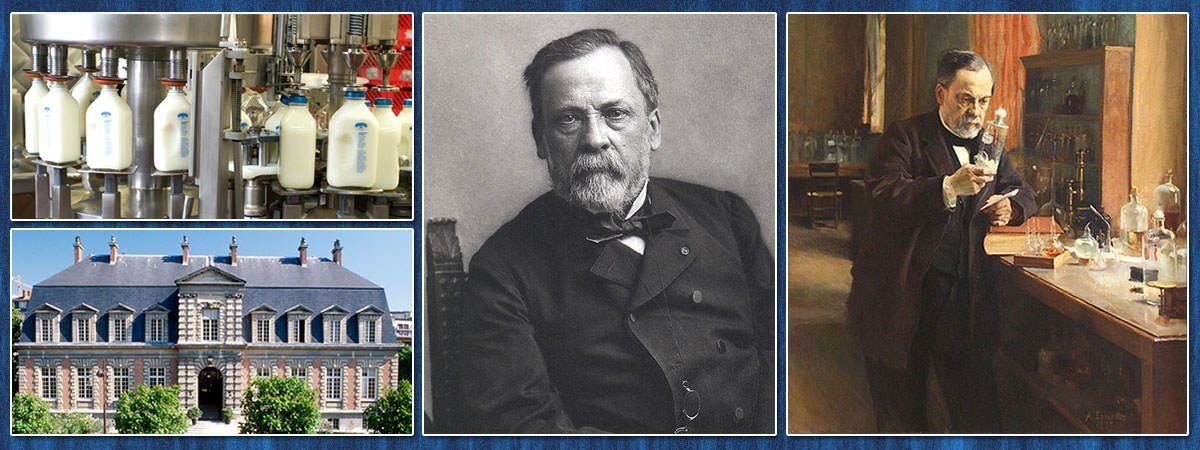Louis Pasteur was a French scientist who is most famous for inventing the process of pasteurization and for developing vaccines for diseases like anthrax and rabies. He is also known for his work in microbiology and for being one of the fathers of the germ theory of disease. Pasteur came from a humble family and was an average student in his early years. He had to endure several misfortunes in his personal life including the death of three of his five children from typhoid. Many years after the death of Pasteur, his laboratory notebooks revealed that he exaggerated the originality of his work, leading to a great controversy. Know more about the family, life, career, death and accomplishments of Louis Pasteur through these 10 interesting facts.
#1 HIS FATHER WAS DECORATED WITH THE LEGION OF HONOUR
Born on 27th December 1822 in Dole, Jura in eastern France, Louis Pasteur was the third child of Jean-Joseph Pasteur and his wife Jeanne-Etiennette Roqui. Jean-Joseph Pasteur was a tanner who had served as a sergeant major during the Napoleonic Wars and had been decorated with the Legion of Honour. He married Jeanne-Etiennette in August 1816. Their first child, a son named Jean-Denis died a few months after his birth in September 1816. Their first daughter Virginie was born in 1818 and two more daughters were born after Louis Pasteur, Josephine in 1825 and Emilie in 1826. Louis’s younger sisters had an unfortunate fate, Josephine had tuberculosis and died at 25 while Emilie suffered from epilepsy and died at 26.
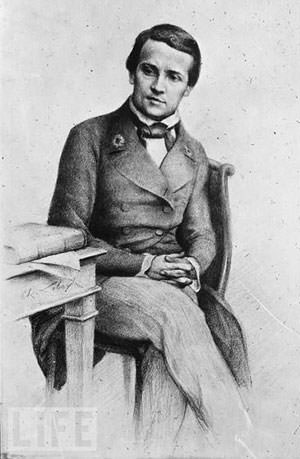
#2 LOUIS WAS INTERESTED IN ART AND MADE PORTRAITS
In 1827, the Pasteur family moved to Arbois, a small town in eastern France surrounded by farms and vineyards. It is here that Louis spent his childhood and attended primary school. He attended secondary school in the nearby town of Besançon. Pasteur was an average student in his early years. He was interested in fishing and art. At the age of 15, he made pastels and portraits of his parents and friends, which were later kept at the museum of the Pasteur Institute in Paris. In 1839, Louis entered the Collège Royal de Besançon. He earned his Bachelor of Arts degree in 1840 and his Bachelor of Science degree in 1842. After a failed attempt, Pasteur succeeded in entering École Normale Supérieure in 1844. He obtained his Master of Science degree in 1845 and his doctorate in sciences in 1847.
#3 THREE OF HIS FIVE CHILDREN DIED FROM TYPHOID AT AN EARLY AGE
In 1848, Louis Pasteur became a professor of chemistry at the University of Strasbourg. Here he met and courted Marie Laurent, the daughter of the university’s chancellor. At the age of 26, Louis Pasteur married Marie Laurent, aged 23, on 29th May 1849 in Strasbourg, France. Marie aided her husband in his scientific writing and was an important assistant to him in his experiments. Louis and Marie had five children, Jeanne (1850–1859), Jean Baptiste (1851–1908), Cécile (1853–1866), Marie Louise (1858–1934) and Camille (1863–1865). However, they lost three of their five children to typhoid and only Jean Baptiste and Marie Louise lived to be adults. Jean Baptiste would serve as a soldier in the Franco-Prussian War of 1870–71.
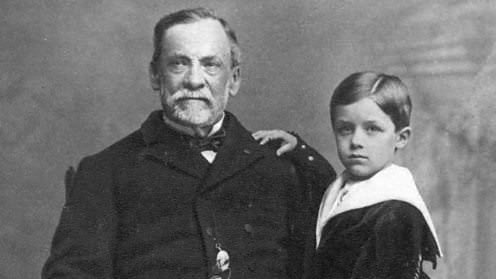
#4 HE IS FAMOUS FOR INVENTING THE PROCESS OF PASTEURIZATION
In the 1850s and 1860s, Louis Pasteur investigated the process of fermentation and through a series of experiments demonstrated that it was caused due to the action of living yeast. Through further research he found that micro-organisms were responsible for spoiling beverages, such as beer, wine and milk. In 1862, he invented the process of pasteurization for which he is most known today. In pasteurization, liquids are heated to a temperature between 60 and 100 °C to kill the microorganisms present within them. The process was first used to save the French wine industries and in 1865, it was patented by Louis Pasteur. Pasteurization is still used widely in the dairy industry and other food processing industries.

#5 PASTEUR WON THE ALHUMBERT PRIZE FOR DISPROVING SPONTANEOUS GENERATION
Spontaneous generation was an age old notion by which life-forms were spontaneously generated from non-living matter. Pasteur’s fermentation experiments challenged this popular notion and he was particularly criticized by Félix Archimède Pouchet, the director of Rouen Museum of Natural History. In 1860, to settle the dispute, the French Academy of Sciences offered the Alhumbert Prize carrying 2,500 francs to anyone who gave convincing experimental proof for or against spontaneous generation. Through an experiment, Pasteur demonstrated that no microbes grew in sterilized solutions provided the air above the solutions was also sterilized, proving that living organisms came from outside and were not spontaneously generated. Pasteur was thus awarded the Alhumbert Prize in 1862.
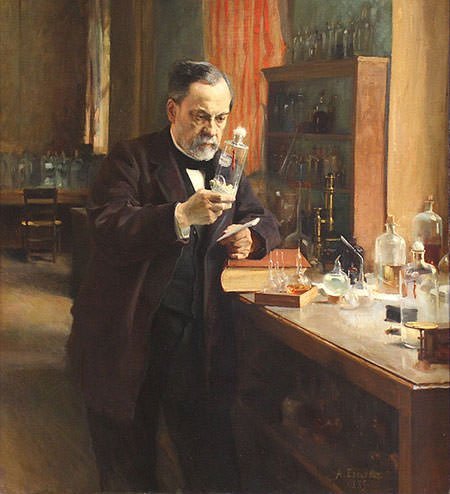
#6 HE TOOK CREDIT FOR TOUSSAINT’S METHOD OF PRODUCING AN ANTHRAX VACCINE
Pasteur’s first important discovery in the study of vaccination came in 1879 and was regarding chicken cholera. After accidentally exposing the chickens to an attenuated culture of the disease, he observed that they became resistant to the fully virulent strain. Pasteur then shifted his focus to the notorious disease anthrax. French veterinarian Jean Joseph Henri Toussaint was actually the first to develop a method of vaccination against anthrax. He shared his results with Pasteur and Pasteur used the method in a public demonstration in 1881 which led to him getting the credit and benefits of Toussaint’s discovery. He never gave credit to Toussaint. Pasteur’s method was also eventually successful but he had already obtained a patent on the production of anthrax vaccine.
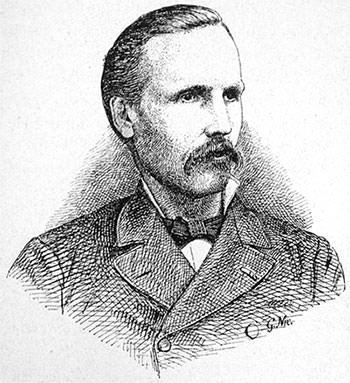
#7 He ROSE TO FAME AFTER HIS TREATMENT OF A BOY BITTEN BY A RABID DOG
Louis Pasteur developed rabies vaccine by growing the virus in rabbits and then drying the affected nerve tissue to weaken the virus. He initially tested his creation on dogs and successfully vaccinated 50 rabid dogs. On July 6, 1885, Louis Pasteur used the vaccine on a nine-year-old boy named Joseph Meister, who had been badly bitten by a rabid dog. This was a huge risk for Pasteur as he was not a medical doctor and could have been prosecuted for practicing medicine without a license. The treatment was successful and laid the foundation for the manufacture of many other vaccines. The legalities were forgotten and Louis Pasteur instead became a national hero.
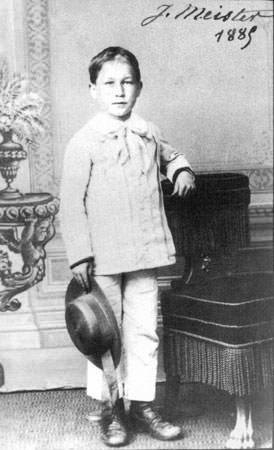
#8 HE FOUNDED THE PASTEUR INSTITUTE IN 1887
From 1854 to 1857, Pasteur served as the dean of the faculty of sciences at Lille University. In 1857, he moved to Paris to work with the institute in which he had studied, École Normale Supérieure. He served as its director of scientific studies till his resignation in 1867. Under Pasteur, examinations were made more rigid resulting in increased competition, thus enhancing the reputation of the institute. Louis Pasteur founded the Pasteur Institute in 1887. He remained its director till the end of his life. The Pasteur Institute is one of the leading medical institutions in the world. It has been at the forefront of the battle against infectious diseases and eight Pasteur Institute scientists have been awarded the Nobel Prize for medicine and physiology.
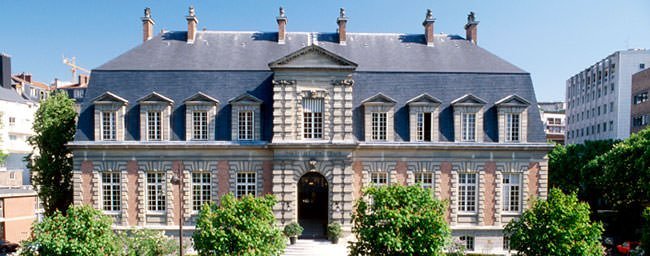
#9 He IS REGARDED AS ONE OF THE FATHERS OF THE GERM THEORY OF DISEASE
Beginning in 1868, Pasteur was frequently stricken by strokes which left him partially paralyzed. His health began to severely deteriorate after an 1894 stroke. Louis Pasteur died of a stroke in Paris on September 28, 1895. He was 72 years old. Pasteur was held in such high esteem in France that he was buried in the Cathedral of Notre Dame after a state funeral. Louis Pasteur is regarded as one of the fathers of the germ theory of disease and his breakthroughs in the causes and prevention of diseases have led to the saving of countless lives since then. He received numerous awards during his life including the prestigious Rumford Medal and Copley Medal awarded by the Royal Society. In 1881, Pasteur was made a Grand Cross of the Legion of Honor, one of only 75 in all of France.
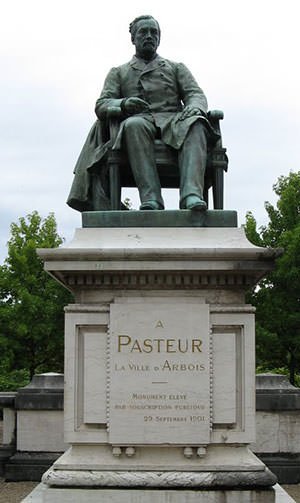
#10 IT WAS LATER REVEALED HE EXAGGERATED THE ORIGINALITY OF HIS WORK
In 1878, Louis Pasteur told his family never to reveal his laboratory notebooks to anyone. The documents were inherited in secrecy for many years. In 1946, Pasteur’s grandson donated the papers to Bibliothèque nationale de France, the National Library of France. Later, historical reassessment of his notebook revealed that Pasteur had exaggerated how much original work he did and had drawn on other people’s findings. It was through these notebooks that it was revealed that he stole the method of Toussaint for the anthrax vaccine and took credit for the discovery. Nevertheless, Louis Pasteur is still held in high regard for the incredible scientific contributions he has made.

